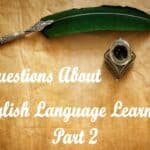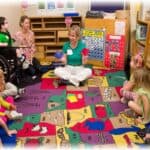As an Instructional Coach, one of the things that I regularly did was to go into classrooms and provide teachers with instructional solutions. I call them solutions and not simply strategies or techniques because each of them helps to solve challenges that many of my teachers faced. Each classroom was different and therefore needed it’s own analysis and plan, but the following practices have proven to be among the most advantageous and least demanding to incorporate on a regular basis. Below are my 10 practices that every teacher should include in a lesson.
1. Write clear and student-friendly lesson objectives
The lesson begins with an objective. What are we learning before this lesson comes to an end? What should I come away with and focus on during this time? The objective should be clear and measurable. This is important for both the teacher and the student. By making the objective clear and measurable, you minimize confusion and provide a framework to assess the success or shortcomings of the lesson.
Example (6th Grade Science)-
Students will be able to identify and describe the layers of Earth by what they are made of
This objective is clear and can be measured. Throughout the lesson, the teacher can asset how students are progressing toward the final goal and make appropriate adjustments either for the whole class or small groups.
2. Provide language objectives
The content objective provided the “what” and now the language objectives will provide the “how”. This practice is crucial for any classroom with English Language Learners as well as many other students who are not secondary language learners. A helpful framework is to use the 4 language domains to craft the language objectives. These are listening, speaking, reading, and writing. This is what this might look like for the 6th grade science objective previously provided.
Content Objective
Students will be able to identify and describe the layers of Earth by what they are made of
Language Objective
Listening- Students will listen to teacher presentation and view a 5 minute video on the Earth’s layers and what they’re made of
Speaking- Students will respond to teacher inquiries and discuss understandings in small groups of 3, students will present findings as a whole group orally
Reading- Students will read chapter 5 of the Science Text, pages 56-58 and provided science article individually
Writing- Students will answer outline questions in their science journals and complete an exit slip to demonstrate understanding
Linguistic Objectives-
Students will use scientific terms atmosphere, crust, upper mantle, etc..
Students will use descriptive language
The linguistic goal is important especially for secondary language learners.
Who Does Sheltered Instruction Benefit?
3. Consider your students’ background knowledge for the content you’re about to present
The background knowledge that each student comes into the lesson with will, to a great extent, determine how the student receives and retains the new information. It’s always a good idea to take the time in making sure that your students have the necessary background knowledge. Yes, it takes a little more time, but I always tell teachers that it’s best for them to spend 45 minutes teaching and have the students retain 50-75% of the content then to spend the same amount of time and have maybe 25% of the class retaining 25-50% of the content. In the science lesson above, it might be worth 10-15 minutes to cover any necessary knowledge that might be necessary to understanding the Earth’s layers.
4. Include visuals wherever appropriate
“A picture is worth a thousand words”. Visuals provide an anchor and reference for students, whether they are or aren’t language learners. Many students will have academic knowledge that can be unlocked through the use of visuals. Just imagine if you had the learn about computers in a foreign language. Illustrations, visuals, and video presentations would most likely be crucial to your success.
5. Present any necessary vocabulary
Whether you prefer introducing vocabulary at the beginning, middle, end of the lesson, or prefer the discovery method, it is necessary to address required vocabulary. Misunderstanding or confusion about the content vocabulary will guarantee that the precious time spent on lesson delivery is time completely wasted. Provide students with a framework to record and organize vocabulary. Have word walls and vocabulary journals available for student reference. For language learners, allow them to keep vocabulary journals with native language translation of the terms. Once the vocabulary is introduced, make sure that it’s incorporated meaningfully and periodically in future lessons.
6. Provide applicable real world relevance
“How does this concept or skill apply to my everyday life?” As often as you can, you should try to include the answer to this question into your teaching. Many students will engage more in the learning once they realize that this content will be relevant to their present or future life success. I know….there are some lessons or content which may never be seen again outside of the classroom. For such content, at the very least, explain to students why they are learning it. Be creative.
SIOP Strategies for English Language Learners
7. Set clear expectations of academic tasks
This goes a little beyond the lesson objectives. Let your students know what is expected of them for the upcoming lesson. As you go through the “language objectives”, discuss the behaviors and outcomes you are looking for. This way, the students will know exactly how to be successful in your classroom.
8. Provide a rubric and example of acceptable outcomes
Assignment rubrics give your students a guide for what is needed for success. It removes the ambiguity and mystery behind teacher expectations. Providing them with examples of completed assignments at different levels will assist them in successfully completing their own assignments. Growing up, I remember spending days on assignments only to find out that I had misunderstood the teacher’s expectations. This may lead to student frustration and loss of interest. No teacher wants that.
9. Plan for hands-on activities
Many students learn by doing. Hands-on activities will not only reinforce the content presented orally or through reading, but will increase student engagement and retention. Simply put, hands-on activities are usually more fun for students. When students are more engaged in a lesson, they will carry that lesson away with them and perhaps make content connections outside of the classroom. That’s a wonderful thing.
10. Plan short, informal assessments throughout the lesson
The whole purpose of presenting a lesson is for students to learn and leave your room with more knowledge than they came in with. To determine whether or not your efforts are being fruitful, you need to purposefully and actively access this throughout your lesson. We’re not talking about anything that will take up valuable instructional time. Things such as whole group questions, short discussions, task completions, and exit slips can easily be incorporated into the lesson making it more effective for both the teacher and the student.
Assessment Methods for English Language Learners
There are multitudes of strategies and practices that can enhance student learning. For more information on strategies for English Language Learners, please see the resources below. Best of luck to you.
Check out the following link to access frequently asked questions on ESL and Bilingual Law in New Jersey.
https://hctutorial.com/esl-and-bilingual-frequently-asked-questions/



